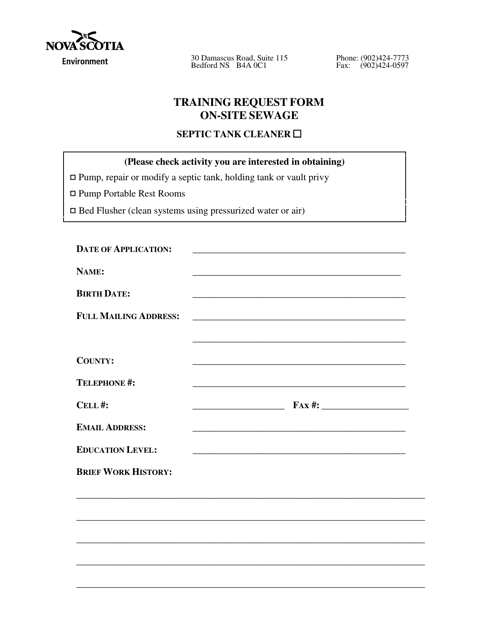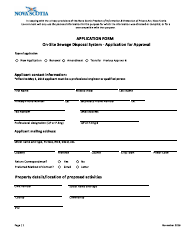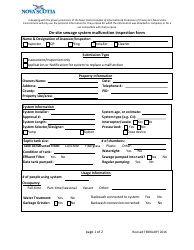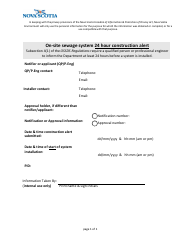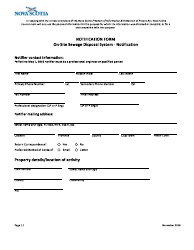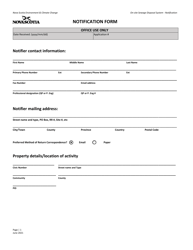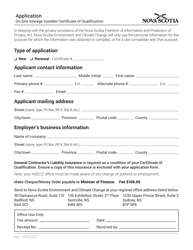Training Request Form on-Site Sewage - Nova Scotia, Canada
The Training Request Form for On-Site Sewage in Nova Scotia, Canada is used to request training related to on-site sewage systems. It is used by individuals or organizations who want to receive training on how to design, install, maintain, or inspect on-site sewage systems in Nova Scotia.
The person responsible for filing the Training Request Form for On-Site Sewage in Nova Scotia, Canada would be the individual or organization who is seeking the training.
FAQ
Q: What is an on-site sewage system?
A: An on-site sewage system is a system used to treat and dispose of wastewater from a property that is not connected to a public sewer system.
Q: Why do some properties require an on-site sewage system?
A: Some properties may be located in areas where a public sewer system is not available, so an on-site sewage system is necessary to properly dispose of wastewater.
Q: How does an on-site sewage system work?
A: An on-site sewage system typically consists of a septic tank where solid waste settles and is broken down by bacteria, and a leaching field where liquids are absorbed into the ground.
Q: What are the regulations and requirements for on-site sewage systems in Nova Scotia?
A: In Nova Scotia, on-site sewage systems must meet the requirements outlined in the Nova Scotia Environment On-site Sewage Disposal Systems Guidelines. These guidelines cover design, installation, and maintenance requirements.
Q: How do I apply for a permit to install or repair an on-site sewage system?
A: To apply for a permit, you will need to contact your local municipality or the Nova Scotia Environment office. They will provide you with the necessary application forms and guide you through the process.
Q: Can I install or repair an on-site sewage system myself?
A: In Nova Scotia, it is generally recommended to hire a qualified professional to install or repair an on-site sewage system, as they have the knowledge and experience to ensure it is done correctly and meets all regulations.
Q: How often should an on-site sewage system be pumped?
A: The frequency of pumping will depend on various factors such as the size of the system and the number of occupants in the property. It is recommended to have the system inspected and pumped every 3-5 years.
Q: What should I do if I suspect a problem with my on-site sewage system?
A: If you notice signs of a problem such as slow drains, odors, or pooling water, it is important to contact a professional to assess and address the issue as soon as possible.
Q: Are there any financial assistance programs available for on-site sewage system installations?
A: In certain cases, there may be financial assistance programs available to help cover the costs of installing or upgrading an on-site sewage system. You can inquire with your local municipality or Nova Scotia Environment for more information.
Q: What are the potential health and environmental risks associated with a failing on-site sewage system?
A: A failing on-site sewage system can lead to contamination of groundwater, surface water, and soils, which can pose health risks and harm the environment. It is important to properly maintain and address any issues with the system.
